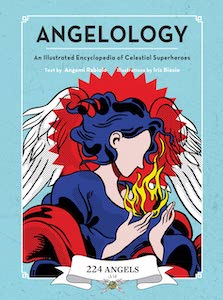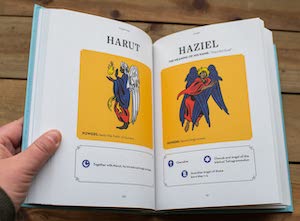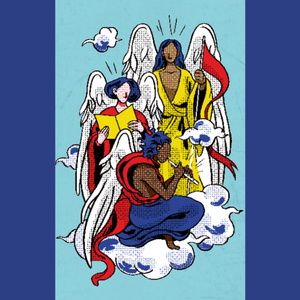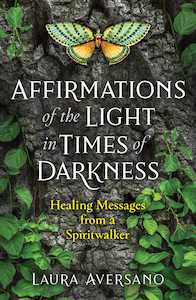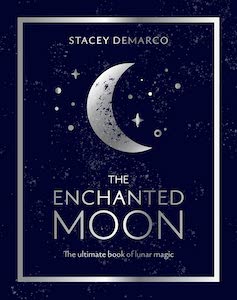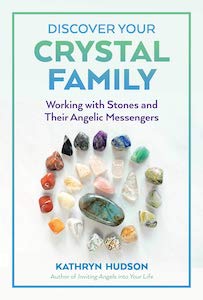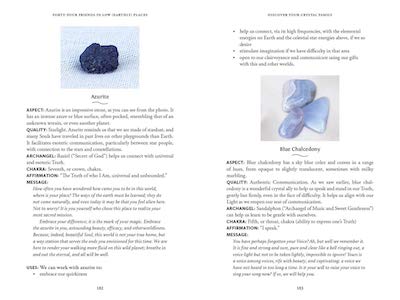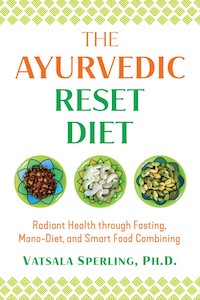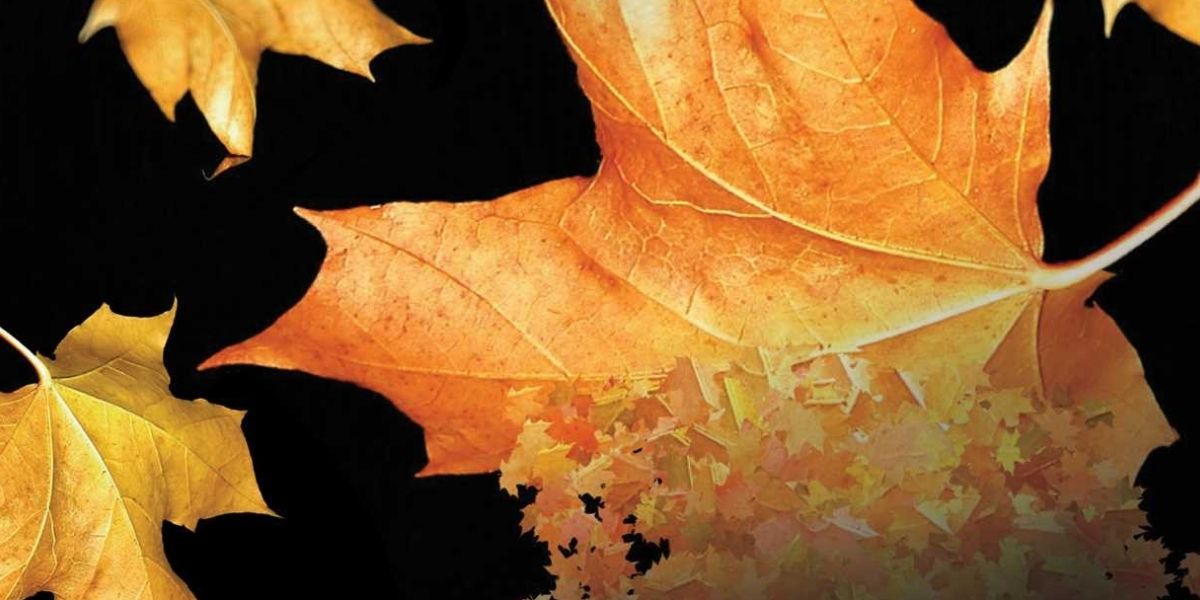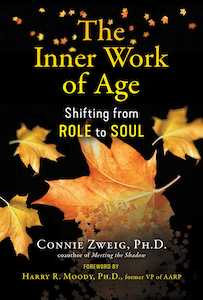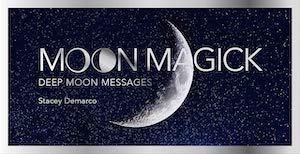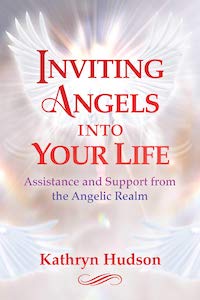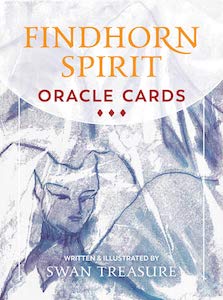
Findhorn Spirit Oracle Cards, by Swan Treasure
Findhorn Press, 9781644113745, 44 cards, 159 pages, March 2022
I have used many oracle decks since I was first introduced to them three decades ago; some resonate with me and some don’t. However, the Findhorn Spirit Oracle Cards by Swan Treasure had an immediate energy to them that I had never before experienced when first introduced to a deck. I had a strong feeling that there were many nature spirits and energies present that seemed to spill out of the box as I held the deck.
Findhorn is not new to me. I had read quite a few books on this magical place in Scotland and how the nature spirits worked with the ecovillage’s founders Eileen and Peter Caddy and Dorothy Maclean on a barren landscape. With the help and direction of nature spirits beautiful gardens were created which eventually developed into a “planetary village” and the Findhorn Foundation which has a “spiritual lineage of cooperation with the subtle realms.”1
“The land surrounding the Findhorn community is indeed a blessed place, tended by a host of powerful and benevolent spirit forces.”2
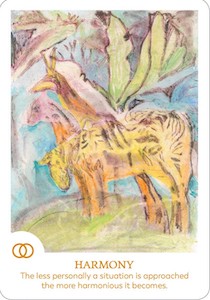
Treasure worked with the subtle realms to write and illustrate this deck. The author bio reads: “Her life is dedicated to raising human consciousness through co-creative spirituality so that we can remember, experience, and awaken the beauty of being fully alive on this planet.”3
The deck was “born” in 2018 at the Co-Creative Spirituality conference at the Findhorn Foundation. The pictures on the deck came through using a “meditative technique called touch-drawing”4 using only the hands and fingernails on tissue paper placed on a board on top of colors. Spirit beings were invited to participate in the co-creation of the deck.
“The messages that have been received in connection with each of the spirit beings depicted in the cards encourage us to reconnect with our essential nature, to expand our awareness to new realities, to activate our full vital energy, and to engage our power of co-creation with the divine, opening to the joy of partnership with the subtle realms.”5
Each card image represents a spirit made visible to us in an understandable way.
The deck follows the shamanic medicine wheel and the cards within the wheel can be used as a “tool to access the support and assistance of the spiritual realms both as a path for self-actualization and for divination purposes.”6
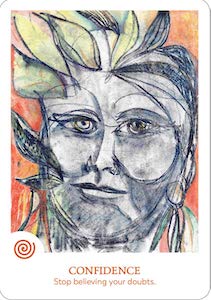
Treasure emphasizes patience and time in getting to know the energy of the deck. She recommends at least eight weeks to connect with these subtle realms, to experience the practices of the cards, and to enter the gateways of these energy portals. She also recommends that one asks permission before entering these spaces, with words such as “Am I allowed?”7. Swan also provides details on consecrating the deck, and how to initiate opening and closing ceremonies when using the deck, all centering on spending time with these energies, not rushing, and extending respect to these guides.
The deck consists of six sets of seven cards, each set representing a gathering of spirit beings associated with the four directions of the medicine wheel plus the directions of above and below. Within each set of seven there are three “significant” cards: a guardian spirit, a turning point, and a spirit akin to an animal or flower. She offers card layouts and types of readings, including the Shapeshifter Reading, The Essence Reading, and The Chakra Alignment Reading. There is a description for each card that includes a communication from the spirit, a focus, and a practice.
The card illustrations are subtle and beautifully colored in tones that match the message of the spirit attached to the card. The Blessings card holds the appearance of a figure cloaked in white with what could be branches or hair emanating from the being’s head flowing upward. The predominance of the color green in the card is highlighted with bits of purple, the message being “let your presence be a blessing.”8
This card represents the Angel of Findhorn, who reminds us that we are living miracles. The focus of the card is on laughter, homecoming, and miracles. The practice encourages making drawings of angels and writing on them, “you are loved, I bless you”9 and signing them as the Angel of Findhorn.
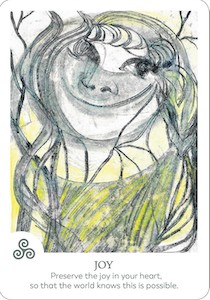
The Victory card kept appearing in my work with the deck. Victory comes from the Realm Above with the message that the “warrior within uses resistance to awaken.”10 The colors of the card are various shades of green flecked with yellows, blues, and spots of red. The face of a strong figure predominates.
Victory represents the spirit of inclusivity that encourages one to “quiet down, go within, drop the survival fears that keep you enslaved.”11 The focus is on respect, balance, and contribution. The practice encourages a reflective pause.
I highly recommend Findhorn Spirit Oracle Cards. I’ve absolutely loved connecting with these cards. This deck has a very powerful elemental energy that results in accurate, heartfelt messages. It’s perfect for the springtime, as the nature spirits are in full bloom. If you do decide to get yourself a copy, I strongly suggest that you take the time to experience all that it offers as it introduces you to the unseen realms that have chosen to work with us.
Anne Greco is a non-fiction writer who writes about her life experiences and travels with humor, keen observations, and the hope that her words will remind us that “we’re all just walking each other home.” Her book, Serendipity: Chance Pilgrimages, tells the story of Anne encountering her places of power. As she reconnects with herself at each site, Anne also develops a deeper understanding and appreciation of her connection to both the seen and unseen worlds. Learn more about her work here: http://annegrecowriter.com.


